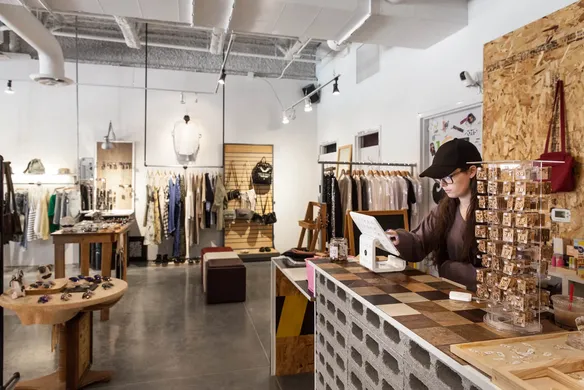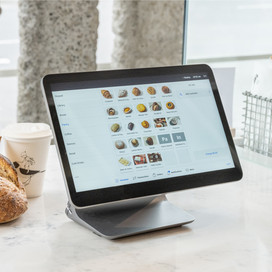Table of contents
This article is for informational purposes only and does not constitute legal, business, or tax advice. For specific advice applicable to your business, please contact a professional.
If you’re already selling products directly to your customers, nice work. If you’re looking to scale your operation, wholesaling to retailers to sell more of your products could be a way for you to grow. Wholesaling means creating a specific pricing strategy and process to reach audiences that you may not be able to reach alone. Here we walk through what a wholesale business model looks like, and how to create one for your business.
What is wholesaling?
A wholesale selling model is one where producers sell their products in bulk to a retailer, usually at a discounted price, who then on-sells the products to their customers. Because consumer sales is a retailer’s specialty, selling wholesale allows you to focus your time on improving your product and adding product lines rather than marketing, for example.
Examples of wholesale businesses online include Amazon — a huge retail marketplace of products that Amazon doesn’t make, but on-sells. An example of a traditional wholesale business might be a department store, like David Jones, that stocks a range of brands.
Why use a wholesale selling model?
E-commerce has revolutionised the way consumers and producers interact by creating a direct line between each party. The ‘middle-man’, or intermediary, and the added costs of working with one, is cut out of the equation. So customers get a better price by paying product creators directly, and product creators receive the highest possible profit from the sale. But there are key benefits in creating or adding wholesale models to your business:
Do more of what you’re good at
When you’re running a business there are a lot of function areas to manage from production to logistics to finance. If you’re selling a product, there’s a good chance you prefer innovation or product development over sales outreach and customer service. Wholesaling your product means tapping into the promotional expertise of retailers while you refine and build on the supply-side of your business.
Leverage other brands to grow your audience
One of the most valuable components of a business is its customer base – and retailers spend a lot of time and money to nurture and grow their audience. When you work with a retailer, you are accessing their hard-won customers, as well as their marketing efforts to acquire new ones. Retailers can also provide value-adds that you may not be able to provide, like gift wrapping or an in-store experience that generates customer loyalty and referrals.
Enter new markets without spending on marketing
If you’ve enjoyed business growth in a particular region or population, entering a new market is one way to scale. But knowing an audience well, and how to reach them, requires a lot of research, marketing spend and sometimes supply chain adjustments. Retailers in new markets understand their local competition and logistics and are able to ‘speak’ to your customers (for instance, in another language!).
How to create a wholesale pricing strategy
When selling to retailers, it’s important to maintain a healthy margin so you don’t undercut your work and your ability to make a profit. Many retailers will expect a 50% margin, and you should try to ensure you get a 50% margin too, or a margin that you are comfortable covers your costs and still means that you make a profit. Here’s an example of a typical wholesale pricing structure:
| Product cost | Wholesale price | Recommended retail price (RRP) |
|---|---|---|
| $50 | $100 | $200 |
| $10 | $20 | $40 |
| $200 | $400 | $800 |
This 50/50 retail model may seem high, but is often essential in being able to cover the fixed and variable costs of doing business, including paying yourself. Here are some other elements to consider when you set your wholesale pricing:
Minimum orders and price breaks
Because you may take a significant hit on your margin by selling wholesale rather than retail, it’s worth setting minimum order quantities (MOQ) and price breaks (for instance, a reduction in price for purchasing a larger amount of product) to incentivise retailers to order more units of your products. You might say your MOQ is ten units, and you have price breaks, or lower wholesale prices, at orders of fifty or 100 units.
Recommended retail price
Your recommended retail price (RRP) is important to communicate with your retailers so the price of the product is the same regardless of the store or channel on which it’s sold, creating a fairer marketplace for both customers and selling parties.
Discount Policy
It can be damaging for your brand to have constantly discounted products, especially if some channels are always offering discounts and others aren’t. The policy may be that a 20% discount may be offered twice yearly, for example for Mothers Day or Boxing Day.
If you add a wholesale channel to your business down the track, you may find you have to increase prices on your customers or work on lowering your cost of goods sold. Whatever your approach, keep in mind your margins directly affect the profitability of your business and it’s worth investing time in getting your pricing model right.
Servicing your retailers
The value each retailer offers can differ significantly, and they may have some of their own policies they need to align to. When setting up retail relationships it is worth talking through each of your target customers, pricing expectations and pricing terms to ensure both parties benefit from working together.
Retailers may ask for Net 15, Net 30 or even Net 60 terms on their orders. This means that they’re asking to pay for the products 15, 30 or 60 days after the products have been shipped, which is one way to manage cash flow. Each business has a different process for managing terms and the risks associated. One approach may be to offer 30 day terms with a 20% deposit on the order, with the first order being paid in full prior to shipment.
Finally, consider how you can support your retailers to sell more of your products! This may be offering product samples as giveaways, for instance, or sharing educational content to help their customers get the most out of using your products.
Introducing a wholesale model is an exciting step in growing your business. Once comfortable with your pricing, you can begin reaching out to brand-aligned retailers you think will help sell your product!
![]()











